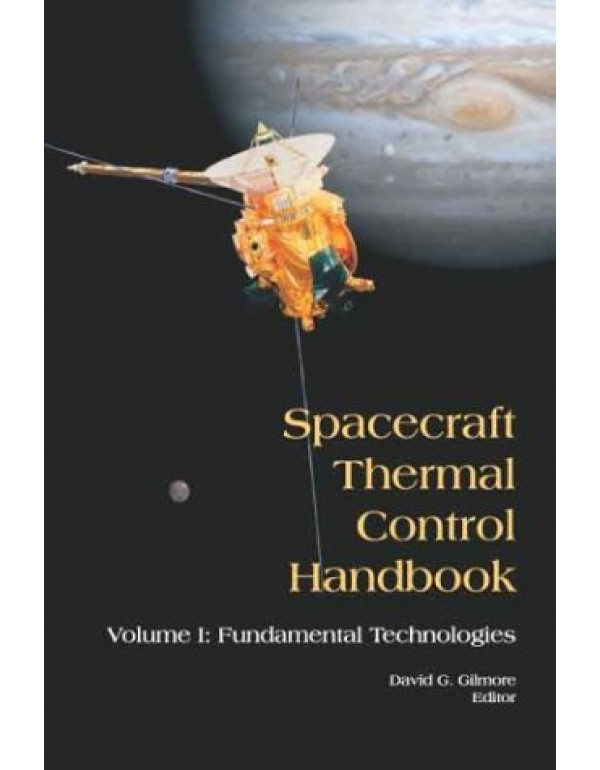- Type: Hardcover Book.
- Publisher:
- Language : English
- Item Weight: 1.429
- Dimensions: 16.3 x 23.4 x 5.6
- Pages: 725
- Edition: Second
Mastering Spacecraft Thermal Control: A Comprehensive Guide
David G. Gilmore's "Spacecraft Thermal Control Handbook, Volume I" offers a comprehensive and up-to-date survey of the technologies and methods used to maintain optimal thermal conditions for various types of spacecraft. This handbook caters to both seasoned thermal engineers and those new to the field.
Key Features:
- Expansive Scope: Delves deep into diverse thermal control technologies, including radiators, heat pipes, insulation, coatings, and more.
- Practical Application: Emphasizes real-world implementation with design examples and case studies.
- Fundamental Grounding: Provides a solid foundation in heat transfer principles and spacecraft thermal environments.
- Global Perspective: Covers thermal control methods relevant to Earth-orbiting satellites, interplanetary probes, and diverse mission scenarios.
- Cutting-Edge Insights: Incorporates the latest advancements in thermal control technologies.
Benefits for Readers:
- Develop a Deep Understanding: Gain a comprehensive understanding of spacecraft thermal control fundamentals.
- Apply Knowledge with Confidence: Learn to design and implement effective thermal control systems for various space missions.
- Stay Updated on Trends: Access the latest developments and advancements in the field.
- Prepare for Advanced Studies: Utilize this book as a foundation for exploring advanced thermal control topics.
Who Should Read This Book:
- Thermal Engineers: Professionals involved in designing, analyzing, and testing spacecraft thermal control systems.
- Aerospace Engineers and Students: Individuals seeking to understand the thermal challenges and solutions in spacecraft design.
- Spacecraft Project Teams: Gaining insights into thermal considerations for diverse mission scenarios.
- Space Enthusiasts: Curious about the engineering marvels that enable spacecraft to operate in extreme environments.
